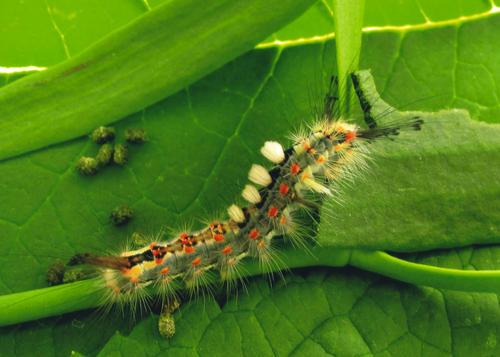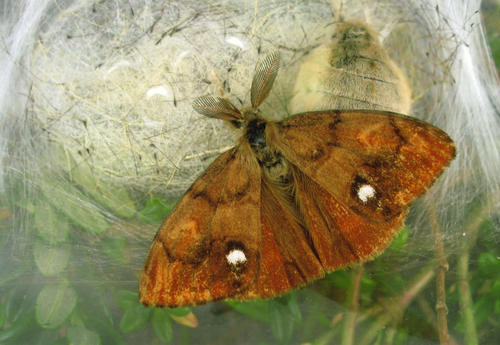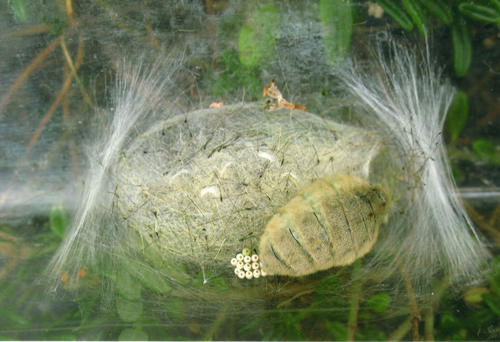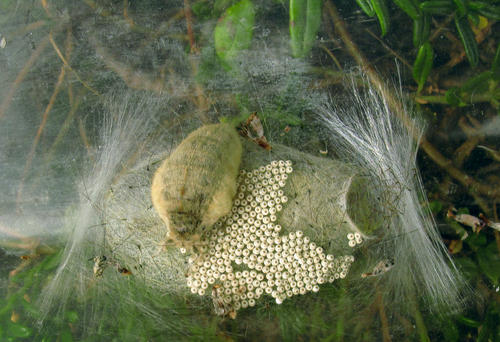Vapourer Moth Orgyia antiqua
Frank Screen
On 26th June 2011 I found a 6mm long larva on mistletoe and immediately recognised is as that of a Vapourer Moth Orgyia antiqua (Fig. 1.). I removed it and put it into a large plastic container with the intention of rearing it to an adult moth. By the next day it had shed its skin and was eating the mistletoe leaves. It shed its skin again on 1st July and now had the characteristic hair tufts. I therefore assumed it was the third moult (Brooks 1991). Four days later it shed its skin again. However, now that it had grown to 16mm long, it was taking longer to go through this process. Six days later the larva became inactive again and this time it took approximately 36 hours to finally shed its skin. It was interesting to note that at each moult the skin was shed in two halves, the front end and the tail end. After four more days the larva had grown to 30mm long and at this stage I decided to move it to a half-sized propagator and I introduced a small log for it to pupate on. By 21st July it had decided to ignore the log and climbed to the underside of the propagator top and begun to spin its cocoon. This was completed in approximated two days. I understood from my book (Brooks 1991) that both the male and female pupae were shiny and black but this pupa was not and remained yellowish in colour.
At 8a.m. on Saturday 20th July I was both surprised and delighted to find that the adult moth had emerged and it was a wingless female. It was already ‘calling’ to attract a male. I had to go out on that morning and it was not until 12.35p.m. that I was able to put the female outside. Within approximately six minutes a male had arrived and mating commenced (Fig. 2.). By 1p.m. the male had left and the female had started to lay eggs. I had inverted the propagator top for the male to gain access to the female. This meant that the female was sitting on top of the cocoon and not clinging on to it. No doubt the enabled the female to continue laying eggs for longer than would have otherwise been the case. No more eggs were laid after 7.30a.m on the 2nd August and by this time the number of eggs exceeded 300. The moth continued to move its position on the batch of eggs and did not cease moving until 10th August (Fig. 3. & Fig. 4.).
The Vapourer Moth is one of the eleven Lymantriidae (Tussock moths). The moth has the advantage of its larvae being able to feed on almost any kind of bush, shrub, tree or plant and during 2011 was found on two other kinds of foliage in my garden. In late April I found a small larva feeding on a wild South African Pelargonium Pelargonium lateripes in my greenhouse and in late May I found a 17 mm long larva feeding on my bonsai hazel.
Reference
Brooks, Margaret. 1991. A complete guide to British moths. Jonathan Cape, London.
Images
Fig. 1. Vapourer moth larva. ©Frank Screen.
Fig. 2. Vapourer moth mating pair. ©Frank Screen.
Fig. 3. Vapourer moth female commencing egg laying. ©Frank Screen.
Fig. 4. Vapourer moth female laying nearly complete. ©Frank Screen.



